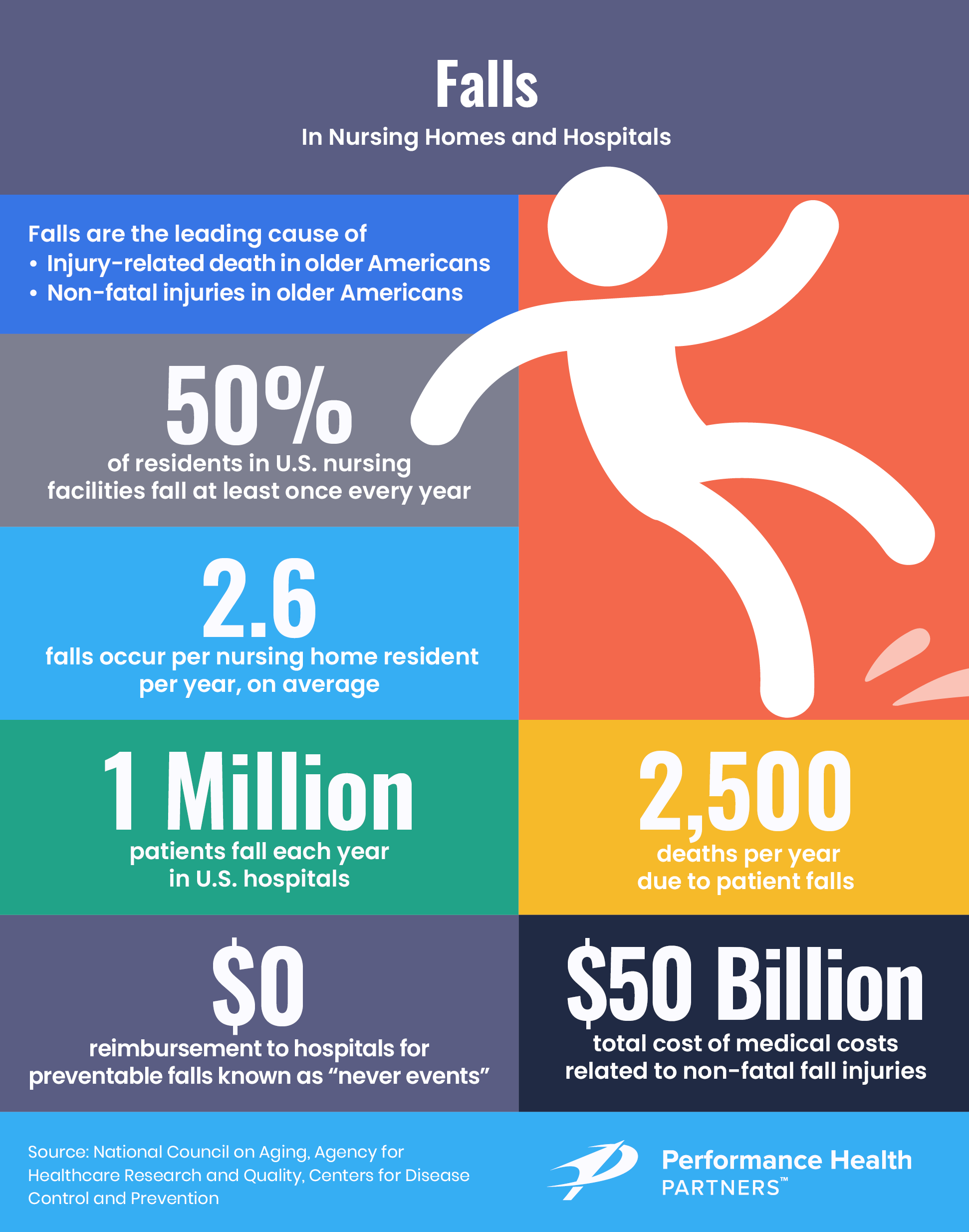3 min read
5 Fall Prevention Hospital Strategies That Work
Performance Health Partners
January 10, 2024
Falls can lead to severe consequences for patients and may result in extended hospital stays or even long-term injuries. To address this concern, hospitals employ various fall prevention strategies to ensure the safety of their patients. In this blog post, we will explore five effective fall prevention hospital strategies that have proven to be successful.
Understanding Fall Prevention Hospital
Falls are a common concern in hospital care, often caused by a combination of risk factors, with older adults being particularly vulnerable. The impact of fall prevention on patient safety is significant. Each year, roughly 700,000 to 1 million patient falls occur in U.S. hospitals, resulting in around 250,000 injuries and up to 11,000 deaths. Implementing effective fall prevention hospital strategies can significantly reduce these numbers and improve patient safety.
1. Develop a Comprehensive Fall Prevention Action Plan
A thorough fall prevention action plan is the cornerstone of any successful patient safety strategy. Hospitals should develop a comprehensive plan that encompasses every aspect of fall prevention, from risk assessment to intervention and monitoring. This plan should be tailored to the specific needs of the hospital and its patient population.
An effective fall prevention action plan in healthcare settings should include the use of a standardized assessment tool to identify fall and injury risk factors. It is also important to manage each patient’s underlying fall risk factor as part of an individualized fall prevention action plan.
The fall prevention component of the care plan should be continuously monitored to ensure its effectiveness. Hospital staff should emphasize key components of the patient’s individualized prevention plan to the patient care team and the patient.
What are the benefits of implementing a fall prevention action plan?
Consider this case study from Mercy Health-Anderson Hospital in Cincinnati, Ohio. After implementing a comprehensive plan, the hospital reduced its fall rate in their med/surg unit from 10 falls per 1,000 patient days to two falls per 1,000 patient days over a three-year period. Some fall prevention examples they used include:
- High risk patients wore red socks and fall risk arm bands
- Fall risk signage was placed on their doors
- Bed alarms were set to sound after one to two seconds (compared to the previously used 10 seconds) after a high-risk patient left their bed
- Patients were engaged in more activities to keep them busy, so they were less likely to get out of bed
2. Prioritize Patient and Family Education
Patient education is a critical component of fall prevention hospital. After all, an informed patient is an empowered and engaged patient.
Hospitals should prioritize educating both patients and their families about fall prevention measures. This includes explaining (and continuously reiterating) the importance of:
- Calling for assistance when needed
- Understanding the potential risks associated with certain medications
- Promoting awareness of environmental factors that could contribute to falls
To reinforce education, hospitals can utilize visual aids, pamphlets, and interactive sessions. For instance, conducting workshops on exercises that improve balance and strength can be beneficial. Additionally, hospitals can provide checklists for patients and their families at discharge to ensure their living spaces at home are fall-proof.

3. Integrate Technology
Embracing technology is a key strategy for modern hospitals aiming to prevent falls. Various technological solutions, such as bed alarms, sensor mats, and wearable devices, can be employed to monitor patient movement and alert healthcare professionals when a potential fall risk is detected.
For instance, sensor mats placed strategically in high-risk areas can trigger alarms if a patient attempts to stand without assistance. Wearable devices equipped with fall detection technology can provide an added layer of security, especially for patients prone to wandering or those with a history of falls.
Technologies such as smart socks, which contain pressure sensors that detect when a patient is at risk of falling, have also been utilized to great effect.
4. Take a Multidisciplinary Approach
Fall prevention is a team effort that requires collaboration among the entire care team. Hospitals should foster a multidisciplinary approach, involving nurses, physicians, physical therapists, and other relevant staff members. Each team member plays a crucial role in assessing and addressing the various factors that contribute to falls.
Regular team meetings can be scheduled to discuss and update fall prevention strategies based on the latest research and best practices. These meetings can take place in the form of safety huddles. Implementing joint training sessions can enhance communication and coordination among team members, ensuring a holistic approach to fall prevention hospital.
5. Conduct Post-Fall Analysis and Continuous Improvement
Even with the best prevention strategies in place, falls may still occur. What sets successful hospitals apart is their commitment to learning from these incidents. Post-fall analysis allows healthcare professionals to identify the root causes of falls and implement changes to prevent similar occurrences in the future.
Any fall prevention program should be based on real-life scenarios, which is why your fall risk analysis should be data-driven and systematic to consider specific factors unique to your organization. Therefore, your fall risk analysis should be an ongoing process.
Technology such as incident reporting software is important for analysis and fall prevention. To help prevent patient falls, using a centralized patient safety technology solution allows your organization to collect, analyze, and track data so that you can identify root causes of patient falls and subsequently update your protocols to ensure that you remain at the forefront of fall prevention.
Fall prevention hospital is a multifaceted challenge that requires a combination of strategies, education, technology, and collaboration among healthcare professionals.
By adopting a comprehensive fall prevention action plan, educating patients and their families, integrating technology, embracing a multidisciplinary approach, and continuously analyzing and improving practices, hospitals can significantly reduce the risk of falls and enhance the overall safety of their patients.



